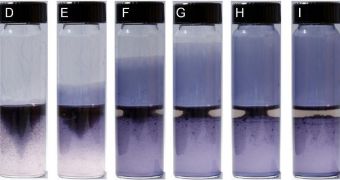Researchers in California have demonstrated in a new investigation that oil and water do mix, when they showed that the two chemicals can combine when nanofibers are added to the mix.
This enabled the research group to produce conducting polymer thin films, that can literally be spread out evenly over virtually all types of surfaces. The achievement has numerous practical applications.
Chemists and engineers at the University of California in Los Angeles (UCLA) wanted to develop a method for producing the films in such a manner that they can cover large surface at a low price.
The technique they developed as a result is both simple and versatile, and it requires nothing but water, oil, polymer nanofibers, and intense shaking. The result is a solution that, when spread on a material, covers it in a conducting film.
“The beauty of this method lies in its simplicity and versatility,” says Richard B. Kaner, who holds an appointment as a researcher at the California NanoSystems Institute (CNSI).
He is also a professor of chemistry and biochemistry, and of materials science and engineering, at the UCLA Henry Samueli School of Engineering and Applied Science (SEAS).
“The materials used are inexpensive and recyclable, the process works on virtually any substrate, it produces a uniform thin film which grows in seconds and the entire thing can be done at room temperature,” the expert adds. The main reason why experts would want to coat stuff in such thin films is that the substrate acts as plastics in terms of toughness, but also have electrical properties at the same time. Thus far, these materials have been very difficult to produce in the shape of nanofilms, at large scales, and at low prices, and this has prevented them from being used in supercapacitors and printed electronic circuits, as originally intended.
“Conducting polymers have enormous potential in electronics, and because this technique works with so many substrates, it can be used in a broad spectrum of applications, including organic solar cells, light-emitting diodes, smart glass and sensors,” explains Yang Yang.
The experts holds an appointment as a SEAS professor of materials science and engineering, and is also the faculty director of the CNSI Nano Renewable Energy Center.
Details of the new investigation were published in the latest issue of the esteemed journal Proceedings of National Academy of Science (PNAS)

 14 DAY TRIAL //
14 DAY TRIAL //